Picture this: You’ve spent months coding your SaaS product, perfecting every feature, and now it’s ready to launch. But your dashboard shows zero customers. The product that kept you up at night isn’t getting the attention it deserves.
As a technical founder, you know the ins and outs of development, but finding those first-paying customers feels like navigating uncharted territory.
Whether you’re building an email marketing tool, a WordPress hosting service, or any other SaaS solution, turning your creation into a business means mastering the art of customer acquisition. Let’s explore proven strategies that work in today’s market beyond the usual “post on social media” advice.
Key takeaways
- Your technical expertise built the product, but finding customers requires a completely different playbook – one that focuses on solving problems rather than showcasing features.
- The most successful SaaS founders don’t just post content randomly – they build strategic narratives that turn casual browsers into paying customers.
- Getting your first customers isn’t about being everywhere – it’s about being in the right places with the right message that resonates with your ideal users.
Want to grow & monetize your SEO traffic? Book a discovery call right now to 10x your revenue.
How to find your first paying customers for your SaaS?
Most businesses fail for several obvious reasons. Lack of vision, lack of qualified team and most importantly, lack of customers.
Finding customers isn’t difficult; developing the right mindset to find customers is. Randomly posting on social media won’t get you a solid customer base. The real reason why your product demo calls aren’t converting into sales is because you focus on features your product has. While your competitors are focusing on benefits for your potential customers, that’s why they have sales and you don’t.
The whole idea of content marketing for your SaaS should be to generate qualified leads. These qualified leads can be converted into customers and getting testimonials of these customers will make it easier for getting more customers down the line.
Let’s dive into eight ways to get your first customers:
#1 Find customers from X/Linkedin followers
What if you had a list of potential customers you could reach out to any time to ask for feedback, invite for trials, and more?
Well, scrapping a list of your competitors’ followers is what you need. This list of followers is where you’ll find first paying customers.
Here’s how to scrape the list of followers from a competitor’s profile:
Use TexAu to scrape the list of competitors’ followers on LinkedIn.
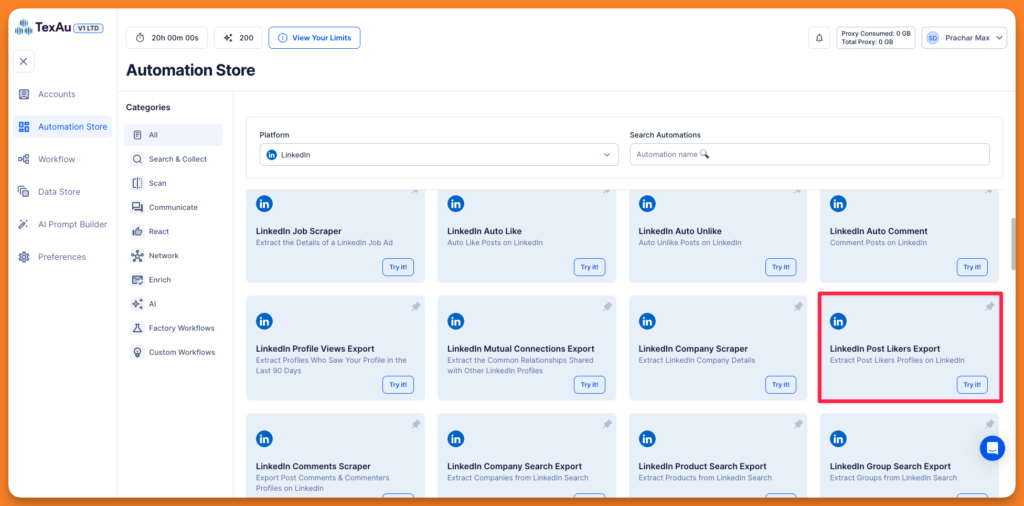
Signup and set up your TexAu account. In the automation store, click on LinkedIn Post Likers Export tile and then select the input source.
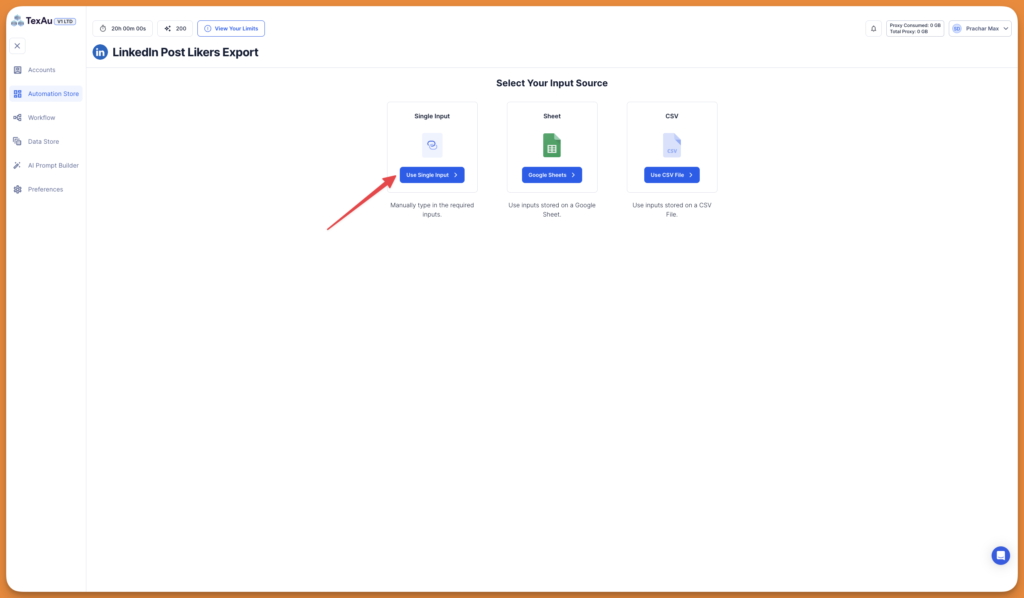
For the sake of this post, I’ve chosen a single input source and you’ll be required to enter the following details of the post you want to scrape the likes from, as shown below.
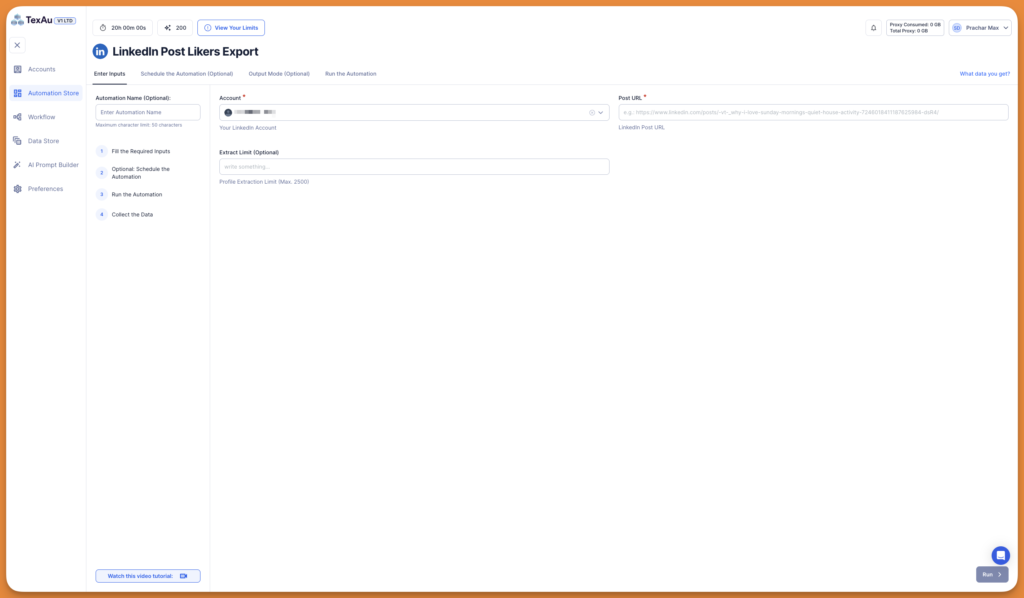
Click on the “Run” button in bottom right, after adding all the details in the respective fields. If you need any assistance, you can click on the Watch this video tutorial button to watch step by step guide.
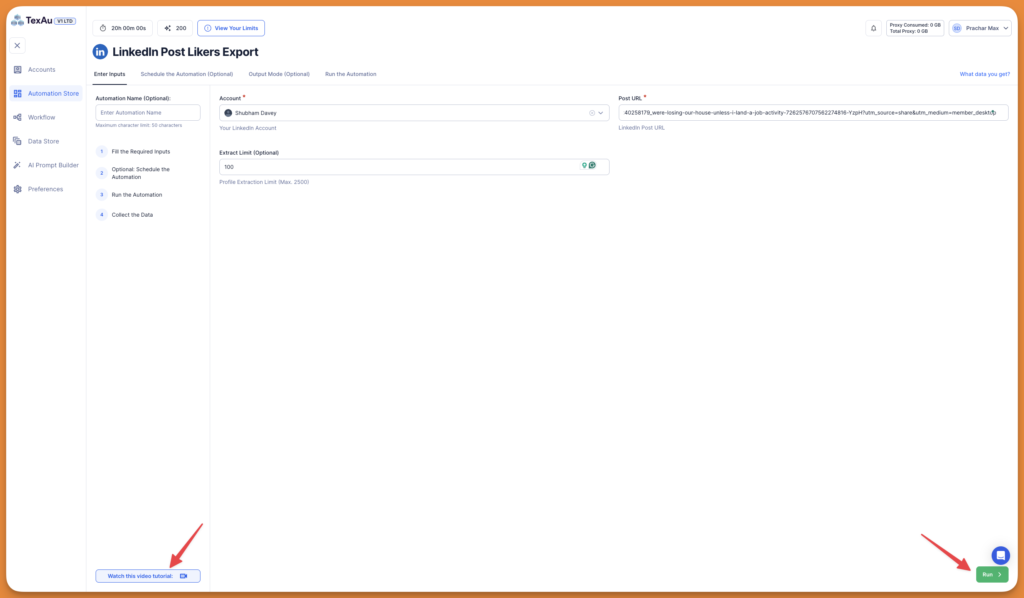
Once the automation is completed, you should see the following successful message. Click on “Show Results” button as shown below.
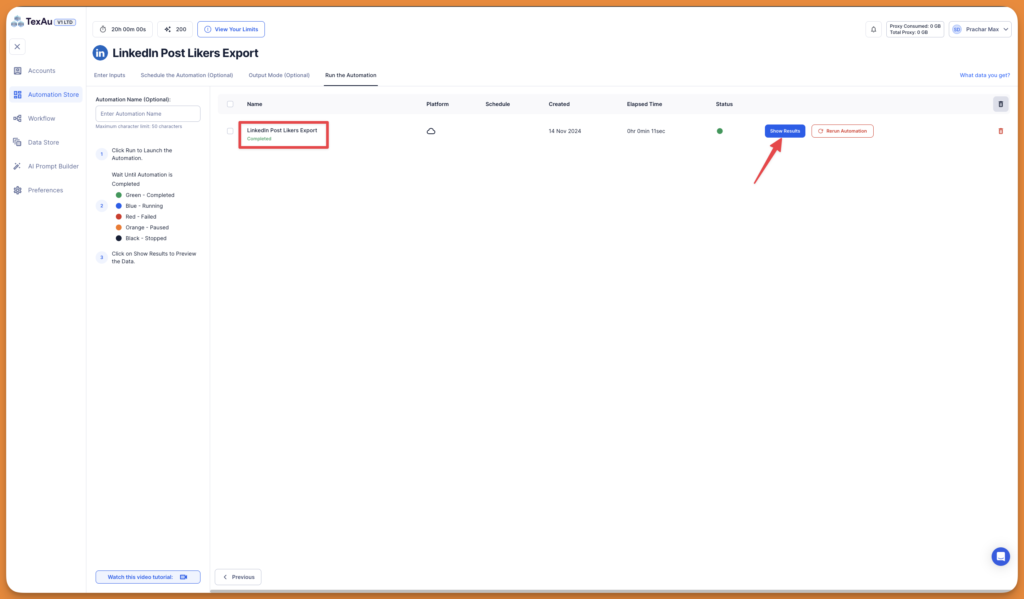
Click on the “Download CSV or Open Google Sheet” button.
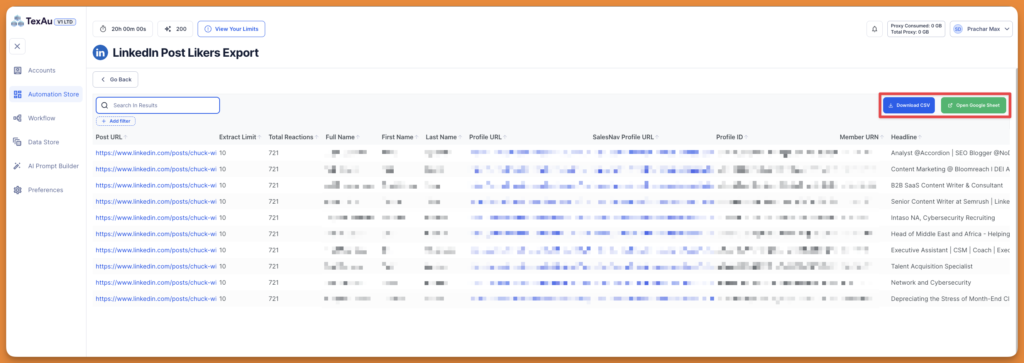
Use this list to get in touch with these people & find your first customers from this list.
#2 Cold email potential customers
Use Apollo to find the email and/or phone numbers of your potential customers. Apollo has a database of 260+ million leads where you can find the contact details of your potential audience.
Apollo has advanced features that can help you narrow down your search to find the most relevant audience for cold email.
Here’s what the Apollo dashboard looks like.
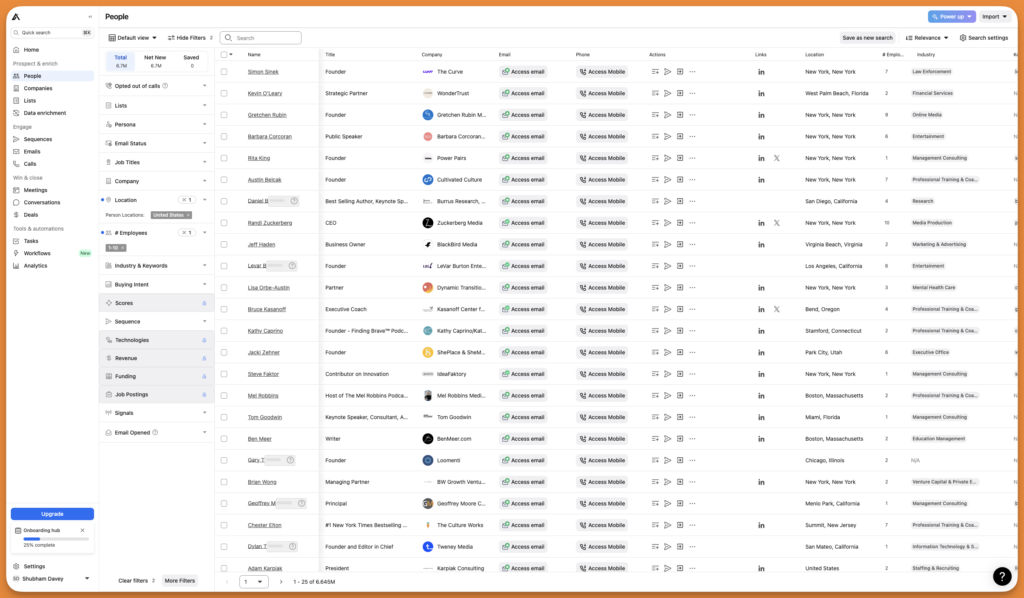
You can also search for companies in the Apollo database as shown below.
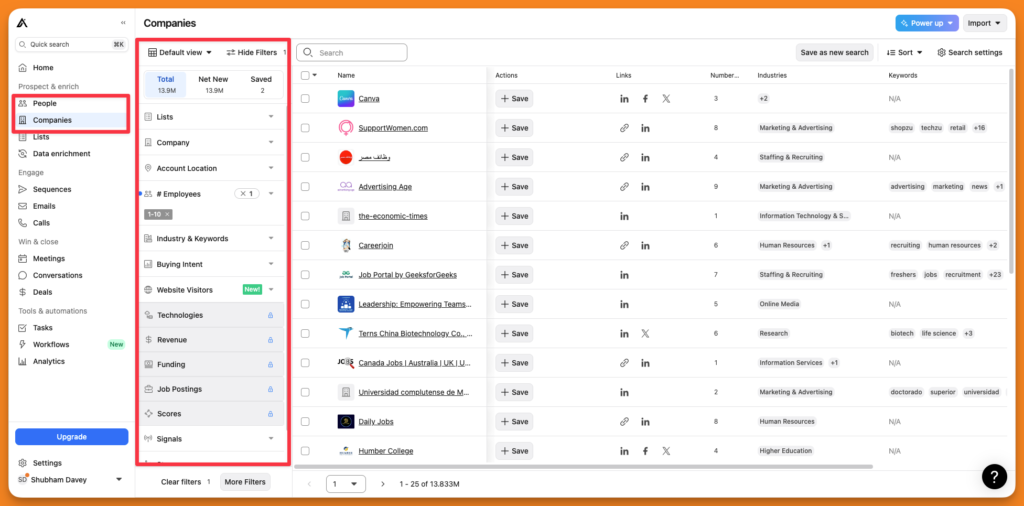
The filters for people and company searches remain more or less the same.
#3 Leverage Reddit
Find subreddits where your target audience spends their time. Ensure you do text-only posts, don’t spam, and avoid self-promoting. Pat Walls got banned for over-promoting Starter Story in his early days. Here’s the whole story from Pat himself:
Here’s how to effectively promote your SaaS on Reddit without coming across as spammy:
Strategic Engagement
Find and monitor relevant subreddits where your target audience hangs out. Beyond obvious ones like r/SaaS and r/startups, look for niche communities that align with your product’s solution.
#1 Building Authority First
Spend 2-3 weeks understanding each subreddit’s culture before promoting anything. Contribute valuable insights, answer questions, and build credibility as a knowledgeable member.
#2 Value-First Approach
When someone posts about a problem your SaaS solves, provide a detailed solution first. Only mention your product as a casual reference at the end, like, “I actually built a tool that helps with this…“.
Content Strategy
#1 Case Studies
Share real success stories and learnings from your SaaS journey. Focus on specific challenges you solved and metrics achieved rather than just promoting features.
#2 Problem-Solution Posts
Create posts addressing common pain points in your niche. Demonstrate your expertise first, making any product mentioned feel natural and helpful rather than promotional.
Engagement Rules
Keep self-promotion to about 10% of your total Reddit activity. For every promotional post, make at least a valuable contribution to the community.
Remember to be transparent about your connection to the product – hiding it will only damage trust. The key is to focus on helping others while being honest about your role.
#4 Post on communities on social media
Social media is no more for leisure engagement. Of course, that’s the primary use case. However, the business aspect of social media cannot be ignored.
Here’s how to effectively leverage social media communities for your SaaS:
Start by identifying active Facebook and LinkedIn groups where your potential customers discuss their daily challenges. Look for groups with engaged members who regularly post about problems your SaaS can solve.
#1 Strategic Participation
Spend time understanding the group’s dynamics before jumping in with solutions. Notice patterns in the questions asked and the pain points discussed. When someone mentions a problem related to your expertise, share detailed, actionable advice first. Only mention your product if it naturally fits into the solution.
For example, if you’ve built a social media scheduling tool and someone asks about managing multiple client accounts, explain the process and workflow first. Then, casually mention how you faced similar challenges, which led you to build your solution.
#2 Building Authority
Position yourself as a helpful community member by:
- Sharing real-world examples and case studies
- Offering quick tips and workarounds
- Answering questions thoroughly
- Engaging in discussions beyond just product promotion2
#3 Common Mistakes to Avoid
Never start conversations with direct product pitches. Groups often have strict rules against self-promotion, and members can spot sales tactics immediately. Instead, focus on building genuine relationships and trust within the community.
The goal is to become a valuable community member first and a solution provider second. When group members start recognizing your expertise, they’ll naturally become curious about your product.
#5 Get live feedback from users
Getting real feedback early helps shape your product’s direction and validates your solution. While many founders focus on building features, understanding user pain points through direct conversations is more valuable for product development.
#1 Finding Users in Groups
Join Facebook and LinkedIn groups where your target users discuss industry challenges. Look for groups with active discussions rather than promotional content. For example, if you’re building an SEO tool, join groups where marketers share their daily struggles with ranking websites.
#2 Engage in Facebook Groups
Monitor group discussions daily and engage with users who post about problems your product solves. Instead of promoting your solution immediately, ask thoughtful questions about their workflow challenges. Once you’ve built rapport, request a quick feedback call to understand their needs better.
#3 LinkedIn Direct Messages
Search for professionals matching your user persona and send personalized messages mentioning specific challenges they’ve posted about. Offer to show them your solution in exchange for honest feedback. Keep the initial message focused on learning from their experience rather than selling.
#4 Job Boards Mining
Look for companies hiring professionals who match your target user. These companies are actively investing in solving problems your product addresses. Reach out to hiring managers with a brief message about helping their new hires become more productive by using your product.
When connecting with potential users, focus on understanding their current workflow before introducing your solution. Ask specific questions about their challenges and what solutions they’ve tried. This approach not only provides valuable feedback but often turns these conversations into early customer relationships.
Make sure you document all feedback systematically and prioritize feature requests based on how frequently specific pain points are mentioned. This data-driven approach ensures your product development aligns with real user needs.
#6 Product listing on review sites
Product listing directories like G2, Capterra, and TrustRadius serve as powerful platforms for SaaS discovery. These platforms collectively receive millions of monthly visitors actively searching for software solutions.
#1 Key Directory to Consider
- Capterra, with its extensive software categories and user reviews
- G2 for its strong B2B focus, and detailed comparison features
- TrustRadius, which receives around 430,000 monthly visitors
- Product Hunt for launching new features, with 2.2M monthly visitors
- AlternativeTo for positioning against competitors, attracting 1.7M monthly visitors
#2 Profile Completion
Create comprehensive listings that include
- Detailed feature descriptions
- Pricing information
- Integration capabilities
- Use cases and target audience
- Screenshots and demo videos
- Customer support options
#3 Review Management
- Actively encourage satisfied customers to leave reviews
- Respond professionally to all reviews, both positive and negative
- Use feedback to improve your product
#4 Premium Features
Consider paid listings on top directories to:
- Appear in sponsored positions
- Access detailed analytics
- Get priority placement in category searches
- Unlock lead generation tools
Remember to maintain consistent information across all directories and regularly update your listings with new features and improvements. This approach helps build credibility and increases your chances of being discovered by potential customers.
Here are a few more directories you can explore:
- getapp.com
- softwareadvice.com
- saasgenius.com
- itcentralstation.com
- saasworthy.com
- financesonline.com
#7 Growth hacking using storytelling
Get active on Ycombinator’s Hacker News and Indie Hacker to create content around your story.
Unlike social media platforms, forums like Hacker News and Indie Hackers value raw, unpolished stories that showcase real challenges and learnings. The key is sharing experiences that other founders can relate to and learn from.
#1 The Journey Format
Share your story by focusing on specific turning points. Instead of writing, “My SaaS reached $10K MRR,” tell the story of how you pivoted three times before finding product-market fit. Include actual conversations with customers that led to these pivots.
#2 Technical Deep Dives
These communities appreciate technical details. Share specific architectural decisions, performance optimizations, or scaling challenges you faced. For example, explain how you reduced server costs by 60% through database optimization.
#3 Revenue Transparency
Be open about your numbers, but frame them within a larger learning context. Instead of just sharing metrics, explain the strategies that didn’t work and why, leading up to what finally succeeded.
#4 Problem-Solution Narrative
Structure your story around a specific problem you encountered and solved. For instance, how did you discover your initial marketing strategy wasn’t working, and what systematic approach did you take to fix it?
Remember that these platforms are discussion-focused. End your stories with open questions that invite community input and foster meaningful discussions. This approach often leads to valuable connections and potential customers who appreciate your transparency and expertise.
Here’s a great video on how you can get better at storytelling right away.
#8 Repurpose on social media platforms
The key to successful social media repurposing lies in adapting your content to match each platform’s unique characteristics while maintaining your core message.
#1 Platform-Specific Formatting
Each platform has its own content sweet spot:
- LinkedIn: Professional insights and longer-form business content
- Twitter: Quick tips and industry updates in 280 characters
- Instagram: Visual storytelling through images and carousels
- Facebook: Community-focused content with mixed media
#2 Blog Post Transformation
Take your existing blog post and break it down into:
- Key statistics as standalone image posts
- Main points as carousel slides
- Core concepts as short video clips
- Notable quotes as text-based posts
#3 Video Content Maximization
When you create a video, extract multiple pieces of content:
- Short clips for Instagram Reels
- Key moments for YouTube Shorts
- Transcribed quotes for LinkedIn posts
- Behind-the-scenes content for Stories
Focus on creating native content for each platform rather than cross-posting the same content everywhere. For example, transform a technical blog post into an engaging Twitter thread by breaking down complex concepts into digestible tweets.
Maintain consistent branding while adapting your tone and presentation style to match each platform’s unique audience expectations.
Ready to get your first customer(s)?
Finding your first SaaS customers isn’t just about following a checklist – it’s about understanding the delicate balance between product development and market needs. While these strategies provide a solid foundation, the real challenge lies in executing them effectively while managing your core product development.
Many successful SaaS founders eventually realize that trying to handle everything alone can slow down growth. Just as you’d hire a developer to scale your technical capabilities, bringing in marketing expertise can significantly accelerate your customer acquisition journey. The time and resources saved often outweigh the initial investment, letting you focus on what you do best – building an exceptional product.
Remember, every major SaaS company today started with zero customers. The difference between those who scaled successfully and those who struggled often came down to knowing when to leverage external expertise to amplify their growth efforts.


